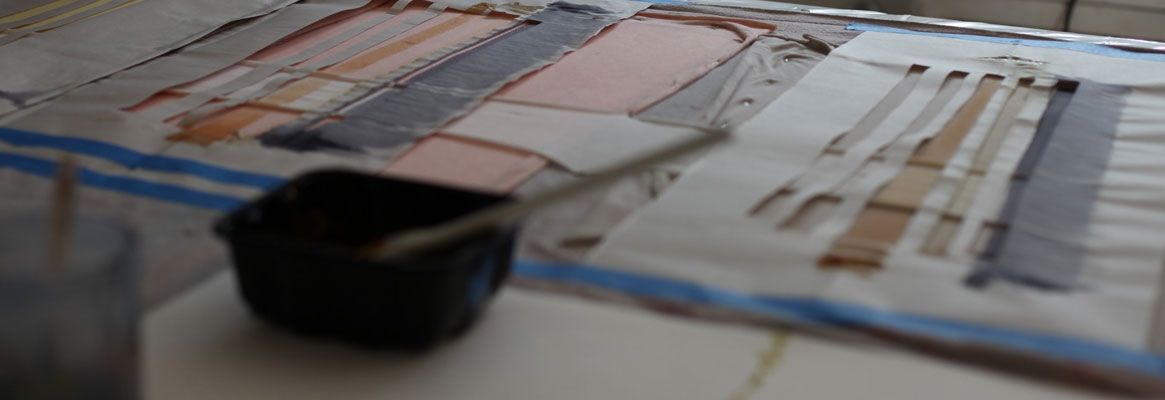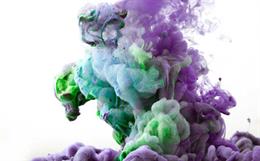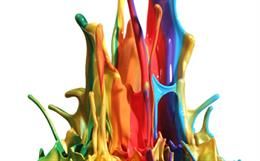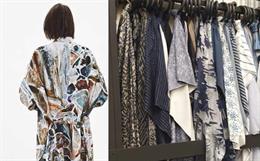More and more textile enterprises are optimizing theircorporate social responsibility (CSR) codes by producing green textiles
Among other chemical companies, DuPont is one providing an example of a successful CSR firm. It used to rely heavily on fossil fuels to makepaint, plastics and polymers. In the 1990s, renowned for its R&D thatcreated products such as nylon, the company decided to spend billions ofdollars on developing safe, environmentally friendly products. It has sincecut greenhouse gas emissions by 72% and air carcinogen emissions by 92% at itsfacilities worldwide, according to Dawn Rittenhouse, DuPont's director ofsustainable development.
The company vowed to make US$2 billion a year in revenue by2015 from 1,000 products that would save energy and reduce pollutants."What's good for business," Rittenhouse said, "must also be goodfor the environment and for people worldwide."
For those who are reluctant to change, the pressure from the public is growing as more retailers are responding to a rising demand foreco-friendly textile and apparel goods from environmentally consciousmanufacturers.
Wal-Mart,the world's largest retailer, recently announced that it would soon expect itssuppliers to utilize eco-friendly processing on products ticketed for itsshelves. This proclamation would undoubtedly have a tremendous effect on theway future textile products were manufactured.
There is considerable work currently being done in the areaof eco-processing. Dr Fred Cook, professor and former director of the School of Polymer, Textile & Fiber Engineering at the Georgia Institute of Technology (Ga.Tech) and member of the operating board of the National Textile Center, suggested that the key for the eco-friendly processing in the chemical and auxiliaryindustry was the elimination of organic solvents. Other initiatives include theelimination of chemicals altogether.
Some efforts are being made to eliminate water, utilizingliquid C02 as the medium to carry dyes, pigments and more.
Dr Cook said research was currently underway at Ga. Techwith "nano dots." These extremely small metal particles are about 10-9 m in size, which makes the particles about the size of visible light. Ifthe particles are of the same size as the blue rays, they would reflect yellow.When these particles are embedded in fiber, the resulting fabric becomes acolor to the eye, without any use of dyes or pigments. By manipulating the sizeof these dots, researchers can then create virtually any color fabric.
Ga. Tech has discovered that nano-sized scales on the wingsof butterflies also cause a reflection of light in certain colors. By emulatingthis technology and etching nano-sized grooves in the fabric, researchers havebeen able to provide colorful fabrics with no dyes or pigments.
Researches for organic processing
Dr Martin Jacobs, Executive Director of the US NationalTextile Center (NTC), discusses some of the eco-friendly processing researchunderway at NTC. The NTC is a research consortium of eight US universities: Auburn University, Clemson University, Cornell University, Georgia Institute of Technology, North Carolina State University and Philadelphia University. It serves the US industries of fiber technology, textiles and retailing.
The NTC has been investigating organic liquids for fiberextrusion under the direction of Dr Roy Broughton of Auburn Engineering. DrBroughton suggests that cellulose fibers are the most plentiful polymericfibers in nature. Most cellulose fibers, however, are not long enough to make afabric. Regenerating cellulose fibers including viscose rayon, cuprammonium rayon, cellulose acetate rayon and Iyocell can solve the length limitation ofcelluloses.
Especially, N-methylmorpholine-N-oxide (NMMO) is fulfillingas a good solvent for newly developed regenerated cellulose fiber, Iyocellexcept solvent stability and recovery.
Applications for the anti-microbial properties on fabricsare diverse. Coating treatment with anti-bacterial chemical is referred as themainstream of the anti-bacterial finishing. Due to the relatively lowdurability of surface treatments, coating of the surfaces is not the mostdesirable treatment. Other anti-microbials are more toxic or less effectivethan the halamines under investigation in laboratories.
Some ionic liquids provide excellent solubility for cellulose as well as Polystyrenhydantoin (PSH), a newly developed anti-bacterial agent.
Regenerated cellulose fiber, having anti-bacterial properties and high durability, can be created by wet spinning using a butyl-methyl-imichloridazolium chloride (BMIM ionic liquid) as a solvent.
Another investigation done by the NTC is concerning the compact fiber-based bioconversion/bio-filtration systems, under the direction of Dr Yong Kim of UMass-Dartmouoth.
Currently, the detoxification of polluted water by biological processes is done primarily on sand particles (sand filter), plastic beads or shell-like surfaces (trickle filters) or smooth plastic surfaces in the form of PVC plates that rotate in the water media. All of these systems are bulky, cumbersome, easily contaminated and highly inefficient.
Recent studies in the UMD Textile Sciences laboratory have shown that nylon flocked polymer surfaces are at least 10 times more efficient in the bioconversion of ammonia to nitrite and finally to nitrate than the above mentioned bioconversion (biofiltration) methods. Potentially, this will lead to devising much more compact-floor-space saving biofilter systems.
The research aims at determining the fundamental materials and geometric parameters that will enable the optimization of flock fiber-coated polymer and textile fabric surfaces for bioconversion activity. It also hopes to establish the hydrodynamic flow characteristics of water across fiber coated (e.g. flocked) surfaces and bioconversion efficiency of the fiber surface to design compact, efficient, bioconversion/ biofiltration water remediation devices.
A new research is underway to find out a new high-yield application of permanent colorants and finishes, under the direction of Dr Haskell Beckham of Ga. Tech.
This will be accomplished by using a novel reactive ionic functional group that will lend high substantivity to a textile chemical via complementary electrostatic attractions (or ionic bonds) which can be thermally converted to covalent bonds.
Apply the textile chemical containing the reactive ionic group and optimize application conditions such as temperature and pH. Compare the reactive ionic chemical to analogous conventional chemicals in terms of fixation yield, salt requirements, application time, reproducibility, levelness, and fastness efficient bioconversion/biofiltration water remediation devices.
The developed countries are looking for a reconciliation of the nature. Alexander Messinger of Philadelphia University is working on the development of environmental fabrics and breathing wall systems.
Today, buildings are designed to maximize energy efficiency and comfort with centralized heating and cooling systems, which require airtight buildings. The effects of use of inexpensive building materials such as particle board (formaldehyde off gassing), drywall, and acoustical tile ceiling tiles (promotes mold growth), in current design and construction has fostered a new series of ailments affecting people occupying these environments - collectively termed Sick Building Syndrome (SBS).
Sick buildings are characterized by hampered air circulation, and imbalances in humidity, which allow for a buildup of biological and chemical contaminants. Several microbial species have been implicated including the mold genera Penicillium, Aspergillus and Alternaria as well as Legionella, Staphylococcus and gram-negative enteric bacteria. Additionally, low and imbalanced levels of natural light have been linked to decreases in serotonin levels (which can lead to sleep disorders and depression).
The economic and public health impacts are significant: US$61 billion lost from medical costs and worker absenteeism. It is estimated that if ventilation and lighting were improved in USA commercial buildings there would be: 16-37 million avoided cases of influenza or common cold, an 8% to 25% decrease in symptoms for the 53 million allergy sufferers and 16 million asthmatics, and a 20-50% reduction in sick building syndrome health symptoms.
As the latter condition affects around 15 million workers annually, the objective of this research project is to study the role of fibrous materials in remediating existing buildings with SBS through the exploration of multiple layered building facades composed primary of fibrous materials.
The goals are to design fabric systems, analyze their airflow and biological contaminant capturing capabilities (microbes and allergens), test their ability to diffuse and balance indoor light levels and determine feasibility of their application for existing and new construction applications.
Success in this research will lead to the utilization of fabric walls and skins in new and existing buildings, thereby increasing the market for textiles while also decreasing SBS.
The textile industry, like all society, faces some tremendous challenges over the next few years in terms of the environment and the way it processes its products and these challenges will certainly intensify. It is also just as obvious that the steps the industry is taking today will enable it to meet these challenges tomorrow.
To read more articles on Textile, Industry, Technical Textile, Dyes & Chemicals, Machinery, Fashion, Apparel, Technology, Retail, Leather, Footwear & Jewellery, Software and General please visit http://articles.fibre2fashion.com
To promote your company, product and services via promotional article, follow
this link: http://www.fibre2fashion.com/services/article-writing-service/content-promotion-services.asp


 News
News Articles
Articles Interviews
Interviews Events
Events Advertise with us
Advertise with us About Us
About Us Contact Us
Contact Us Privacy Policy
Privacy Policy Terms & Conditions
Terms & Conditions Cookie Policy
Cookie Policy









